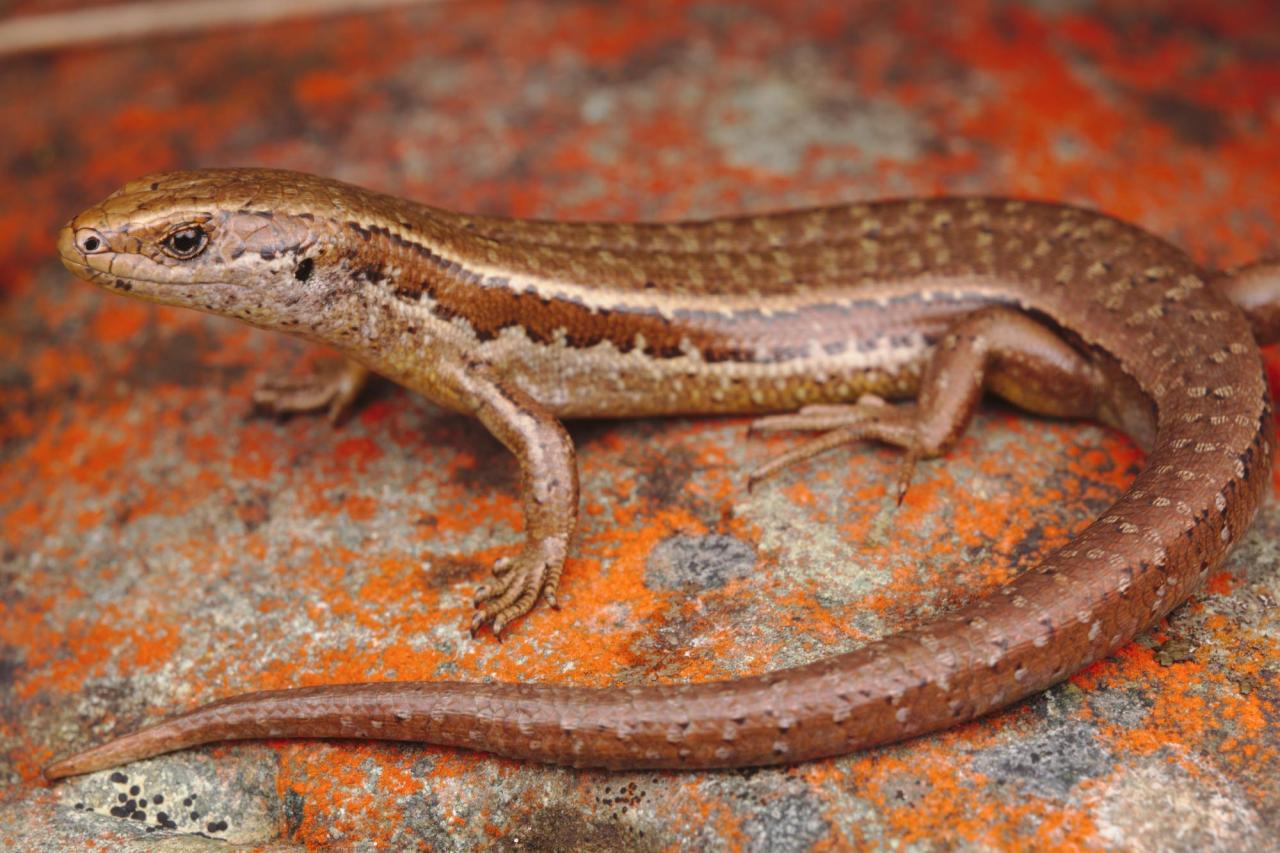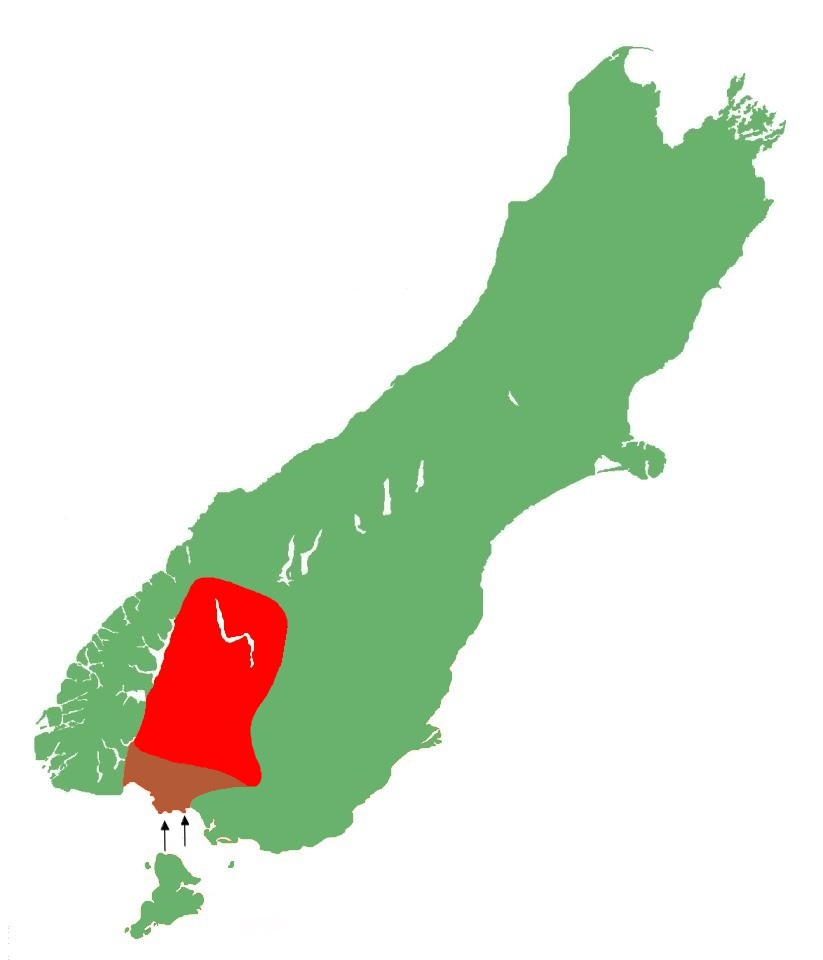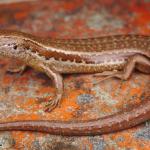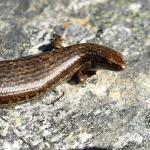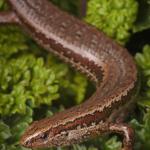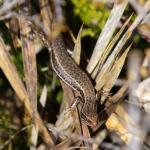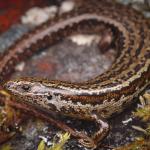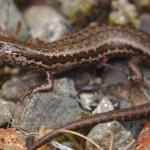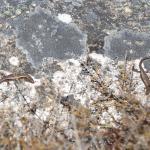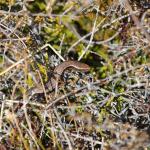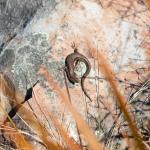- Home
- Herpetofauna Index
- Native
- Oligosoma Inconspicuum
Oligosoma inconspicuum
Cryptic skink
Oligosoma inconspicuum
(Patterson & Dougherty, 1990)
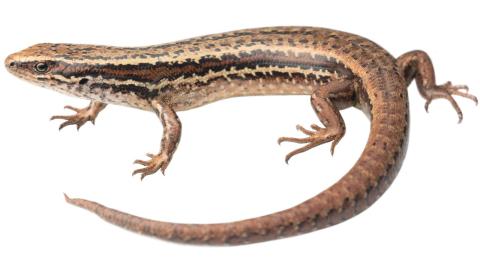
Length: SVL up to 86mm, with the tail being equal to or longer than the body length
Weight: up to 6 grams
Description
A beautiful, and highly variable skink species that is well known for its cryptic nature (at least in comparison to other diurnal skinks in the South Island). The cryptic skink formerly encompassed many other species within the 'cryptic skink species complex', but now refers to those populations occurring in primarily rocky habitats in the south-western South Island, south of Lake Wakatipu (excluding Fiordland).
This species, although similar to some other members of the cryptic skink complex, is generally characterised by its mid to dark brown dorsal (upper) surfaces, which are covered by varying degrees of light through to dark flecking. A mid-dorsal stripe (broken or complete) is occasionally present.
The lateral surfaces (sides) typically bear a vivid dark lateral band, which is typically bordered with a pale-cream notched or smooth dorsolateral stripe.
Ventral (lower) surfaces are typically varying degrees of yellow with minimal or no flecking, whilst the throat varies from light-grey through to yellow with dark flecking.
According to Jewell (2022) they can be differentiated from the Te Wāhipounamu skink (Oligosoma pluvialis) based on the absence of a keeled tail, along with differences in eye colour (brown vs. green iris), although there is likely some overlap in these characters. Additionally, they can be differentiated from the herbfield skink (Oligosoma. murihiku) based on eye colour (brown vs. green iris), as well as their tendency to lack dorsal striping.
Life expectancy
Largely unknown, but as with most of Aotearoa's small endemic skinks, their life expectancy is likely to be at least 10-20 years in the wild.
Distribution
Seemingly restricted to western Otago and Southland, from Lake Wakatipu through to around Riverton in Southland. Several island populations are known to occur including Tree Island in Lake Wakatipu, as well as Raratoka/Centre and Pig Islands in the Foveaux Strait.
Ecology and habitat
Cryptic skinks may differ in habitat use and ecology depending on their locality, however, their habitat use and behaviour are generally consistent across their range. These skinks are diurnal and terrestrial (occasionally semi-arboreal climbing into tall shrubs). While they do sun bask, they typically do so in a cryptic manner, while hiding in dense vegetation or near the entrance to their stone retreats. Consequently, they can sometimes be difficult to observe basking. These skinks have been recorded in a variety of habitats from the lowland right up to at least 1825 m (a.s.l). In comparison to some other members of the cryptic skink complex, they tend to occur in more rocky habitats, including rocky beaches, shrubland, screes, and tallus, although they do also occur in heavily-vegetated habitats in some localities.
Social structure
Largely unknown, however, some populations have been seen at remarkably high densities, whilst others appear to be more solitary, or at least occur at lower densities.
Breeding biology
Poorly understood. Females produce 1-3 young annually (at least in lowland areas) in summer (January-March), however, it is possible that populations occurring at higher elevations may be biennial breeders (breeding every second year).
Diet
Cryptic skinks are primarily insectivorous, feeding on small arachnids, beetles, and other invertebrates, but are also known to take advantage of the fruit and nectar of certain native plants when they are in season.
Disease
The diseases and parasites of Aotearoa's reptile fauna have been left largely undocumented, and as such, it is hard to give a clear determination of the full spectrum of these for many species.
The cryptic skink, as with many of our other Oligosoma species, is likely to be a host for at least one species of endoparasitic nematodes in the Skrjabinodon genus (Skrjabinodon poicilandri), as well as at least one strain of Salmonella.
As with some of the other small skink species in the south-eastern South Island, it is likely that the cryptic skink is a host for the ectoparasitic mites Odontacarus lygosomae, and Ophionyssus scincorum.
Conservation strategy
Listed in the most recent threat classification as 'At Risk - Declining'. This species is not being actively managed, however, three populations are known to exist on predator-free Islands (Raratoka/Centre Island, and Pig Island in the Foveaux Strait, as well as Tree Island in Lake Wakatipu).
Interesting notes
The specific name 'inconspicuum' is a combination of the Latin words 'in' (not).and 'conspicuus' (clearly visible), and is a reference to their cryptic (secretive) natures.
Historically the cryptic skink was regarded as one highly variable species occurring throughout Otago, Southland and Stewart Island, however, advancements in taxonomy and genetic analysis led to the realisation that this species was in fact comprised of several unique species. This led to the splitting off of the southern (Oligosoma notosaurus), Burgan (O. burganae), Te Kakahu (O. tekakahu), and Nevis skinks (O. toka), and more recently the herbfield (O. murihiku), and Te Wāhipounamu skinks (O. pluvialis).
References
Jewell, T. (2008). A photographic guide to reptiles and amphibians of New Zealand. Auckland: New Holland.
Jewell, T. (2019). Skinks of southern New Zealand. A field guide. Edition 4.
Jewell, T. (2022). Oligosoma murihiku n. sp. (Reptilia: Scincidae) from the south-eastern South Island of New Zealand. Jewell Publications, Occasional Publication #2022C.
Jewell, T. (2022). Oligosoma pluvialis n. sp. (Reptilia: Scincidae) from Te Wāhipounamu/South West New Zealand. Jewell Publications, Occasional Publication #2022H.
van Winkel, D., Baling, M., Hitchmough, R. 2018. Reptiles and amphibians of New Zealand – a field guide. Auckland university press, Auckland New Zealand.

